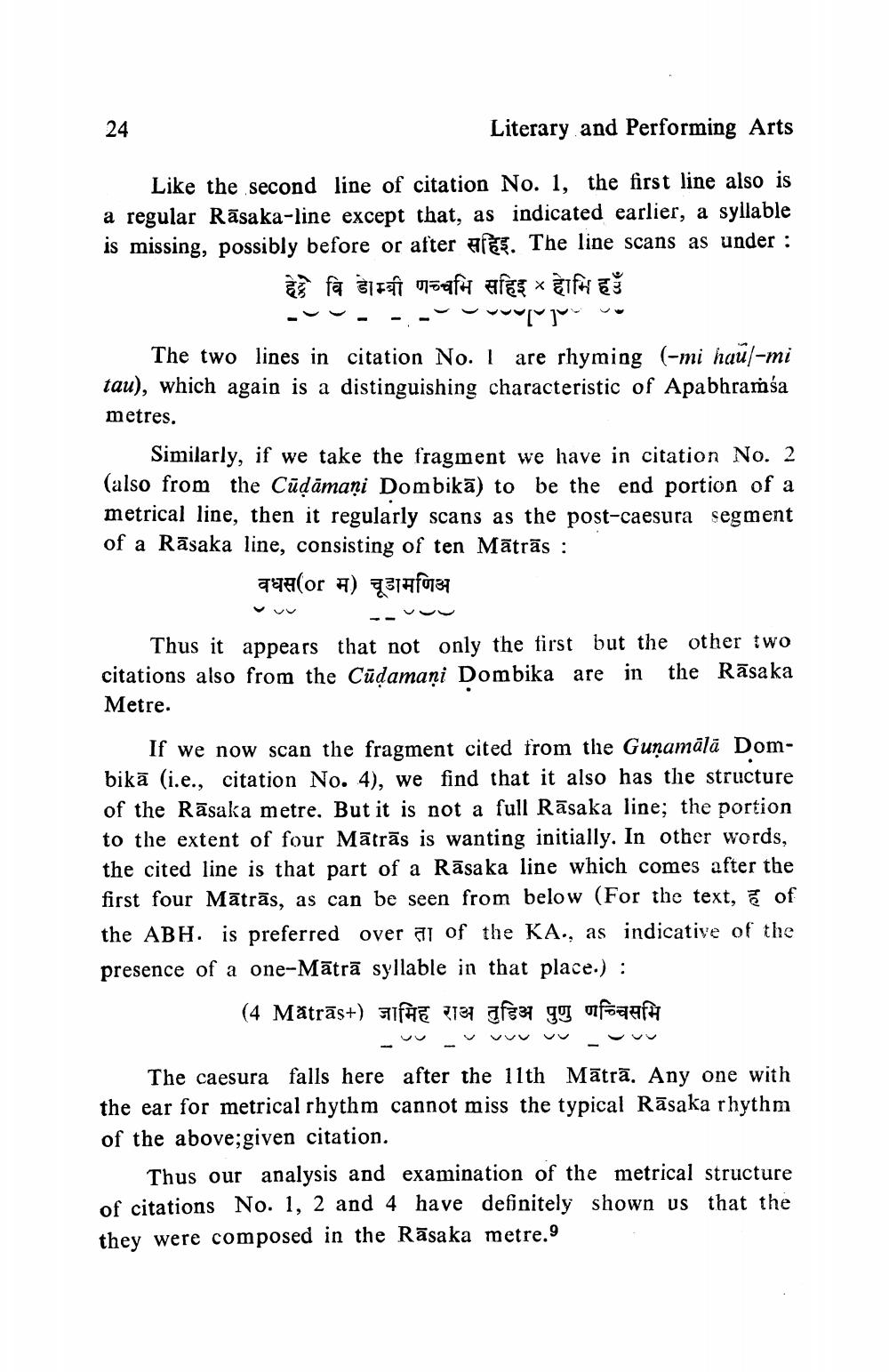________________
24
Literary and Performing Arts
Like the second line of citation No. 1, the first line also is a regular Rāsaka-line except that, as indicated earlier, a syllable is missing, possibly before or after pres. The line scans as under :
हेतु वि डाम्बी णच्चभि सहिइ - होमि हउँ
The two lines in citation No. 1 are rhyming (-mi haül-mi tau), which again is a distinguishing characteristic of Apabhramsa metres.
Similarly, if we take the fragment we have in citation No. 2 (also from the Cūdāmaņi Dombikā) to be the end portion of a metrical line, then it regularly scans as the post-caesura segment of a Rāsaka line, consisting of ten Mātrās :
(or #) T1410134
Thus it appears that not only the first but the other two citations also from the Cūdamaņi Dombika are in the Rāsaka Metre.
If we now scan the fragment cited from the Gunamālā Dombikā (i.e., citation No. 4), we find that it also has the structure of the Rāsaka metre. But it is not a full Rāsaka line; the portion to the extent of four Mātrās is wanting initially. In other words, the cited line is that part of a Rāsaka line which comes after the first four Mātrās, as can be seen from below (For the text, of the ABH. is preferred over at of the KA., as indicative of the presence of a one-Mātrā syllable in that place.) :
(4 Matras+) जामिह राअ तुडिअ पुणु णच्चिसमि
The caesura falls here after the 11th Mātrā. Any one with the ear for metrical rhythm cannot miss the typical Rāsaka rhythm of the above;given citation.
Thus our analysis and examination of the metrical structure of citations No. 1, 2 and 4 have definitely shown us that the they were composed in the Rāsaka metre.9




